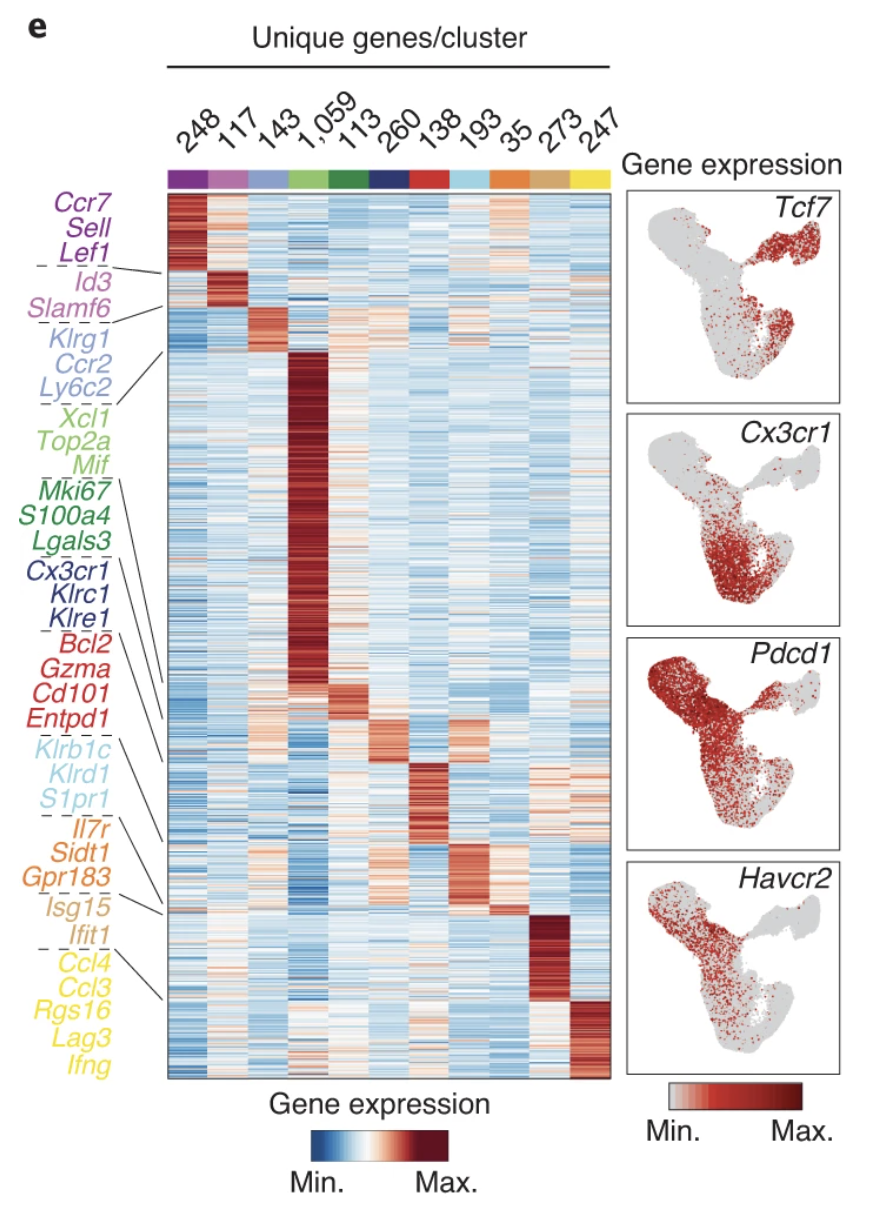
Bence Daniel, Kathryn E. Yost, Sunnie Hsiung, Katalin Sandor, Yu Xia, Yanyan Qi, Kamir J. Hiam-Galvez, Mollie Black, Colin J. Raposo, Quanming Shi, Stefanie L. Meier, Julia A. Belk, Josephine R. Giles, E. John Wherry, Howard Y. Chang, Takeshi Egawa & Ansuman T. Satpathy
Nature Immunology, 26 October 2022
Chronic antigen exposure during viral infection or cancer promotes an exhausted T cell (Tex) state with reduced effector function. However, whether all antigen-specific T cell clones follow the same Tex differentiation trajectory remains unclear. Here, we generate a single-cell multiomic atlas of T cell exhaustion in murine chronic viral infection that redefines Tex phenotypic diversity, including two late-stage Tex subsets with either a terminal exhaustion (Texterm) or a killer cell lectin-like receptor-expressing cytotoxic (TexKLR) phenotype. We use paired single-cell RNA and T cell receptor sequencing to uncover clonal differentiation trajectories of Texterm-biased, TexKLR-biased or divergent clones that acquire both phenotypes. We show that high T cell receptor signaling avidity correlates with Texterm, whereas low avidity correlates with effector-like TexKLR fate. Finally, we identify similar clonal differentiation trajectories in human tumor-infiltrating lymphocytes. These findings reveal clonal heterogeneity in the T cell response to chronic antigen that influences Tex fates and persistence.